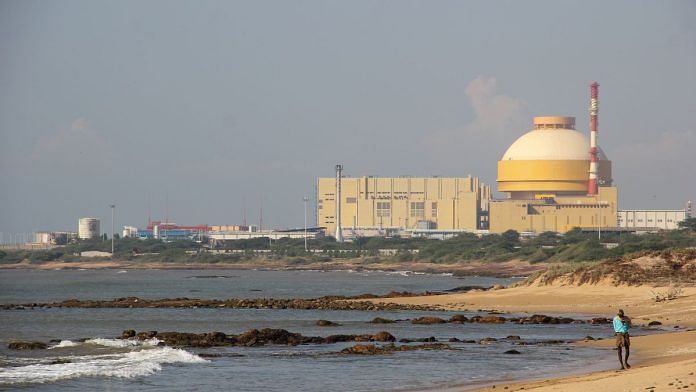New Delhi: The Union Government plans to promote nuclear reactors in India through a Nuclear Energy Mission with an outlay of Rs 20,000 crore. In her Union Budget speech Saturday, Finance Minister Nirmala Sitharaman stressed how nuclear energy development is necessary for India’s energy transition plans.
The power sector was one of the six main focuses of the Union Budget 2025-26, and most of the policies in the sector were in the nuclear energy segment. Additionally, the document also spoke about electricity sector reforms, particularly in states, to improve distribution and transmission.
The Budget announced that India’s nuclear energy capacity, which currently stands at eight gigawatts (GW), will develop to “at least 100 GW by 2047”. This is expected to be achieved by promoting small modular reactors (SMRs), which were a major focus in the 2024-25 Budget as well. The plan is to set up and operationalise at least five “indigenously developed” SMRs in the country in the next eight years, by 2033.
The Nuclear Energy Mission announced by Sitharaman would open collaboration with the private sector and focus on research and development (R&D) for these SMRs.
While this is the second year in a row the government has pushed nuclear energy as part of India’s clean energy efforts, the Budget this year also mentioned the challenges that come with this energy source. The Economic Survey released Friday highlighted public concerns about nuclear safety, as well as the monopoly over nuclear technologies in a few countries, as some of these challenges.
In a bid to allay these concerns, Sitharaman spoke about the government’s plans to amend certain nuclear energy acts.
“For an active partnership with the private sector towards this goal, amendments to the Atomic Energy Act and the Civil Liability for Nuclear Damage Act will be taken up,” Sitharaman said.
Also Read: Nuclear power is cleaner, more reliable than solar energy. India must ease regulations
Electricity and renewable energy manufacturing
In the electricity sector, the Budget proposed improving the “financial health” of electricity companies by pushing states to enact distribution reforms. State-run electricity distribution companies (DISCOMs) are infamously known for their rising debt due to issues including poor tariff collection and transmission losses.
The announced power sector reforms could help alleviate these problems. The Budget stated that based on states enacting these reforms, the Union Government would increase their borrowing capacity by 0.5 percent of the states’ GDPs.
Additionally, the Budget declared a renewed focus on clean tech manufacturing under the National Manufacturing Mission. Given India’s upcoming renewable energy capacity additions and its attempts to reduce import reliance on countries like China, the government aims to push for indigenous production of these technologies.
“The National Manufacturing Mission will scale up the deployment of renewable energy and make India a crucial link in the global supply chains,” Saurabh Kumar, Vice President – India, Global Energy Alliance for People and Planet (GEAPP), told ThePrint.
As part of the domestic manufacturing push, the government plans to indigenise products such as electrolysers for green hydrogen production, lithium-ion batteries for electric vehicles (EVs), solar photovoltaic cells for solar power plants, and wind turbines for wind energy.
Nuclear focus remains
Currently, nuclear energy contributes less than two percent of India’s total energy mix.
India’s July 2024 Budget also emphasised the need to collaborate with private sector players to introduce SMRs and Bharat small reactors (BSRs) into the country’s energy mix. The July announcement had mentioned proposed amendments to the Atomic Energy Act of 1962, which currently does not allow private players to set up nuclear power plants in India. However, given the need for private investment to boost this sector, Sitharaman’s speech this year reiterated that the Act will be amended.
Additionally, the Budget speech this year mentioned proposed amendments to the Civil Liability for Nuclear Damage Act of 2010. This Act provides for compensation to victims of nuclear accidents and stipulates that compensation will be provided by operators regardless of ‘fault’.
The SMRs that India plans to focus on are essentially reactors with a capacity of 300 MW, which is lower than the typical nuclear reactor capacity of over 700 MW. These SMRs also feature unique technologies that allow for easier assembly compared to traditional reactors, thanks to their ‘modular’ design.
These reactors are expected to be more efficient and cost-effective than traditional nuclear plants while still contributing towards India’s energy transition targets and the 2030 goal of achieving 500 GW of non-fossil fuel installed capacity.
(Edited by Radifah Kabir)
Also Read: Three sides of India’s nuclear security regime—and what more it needs






